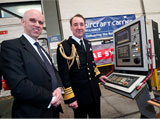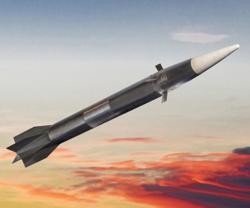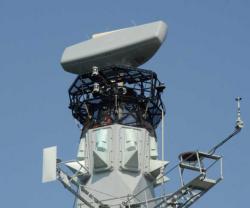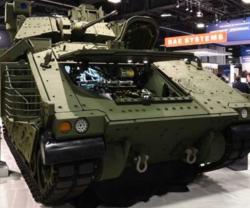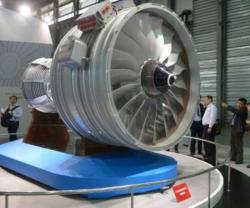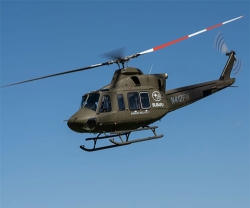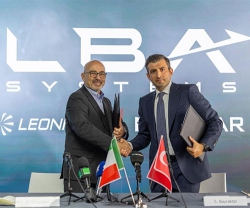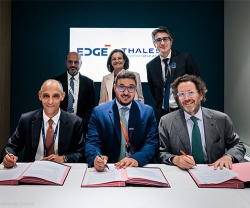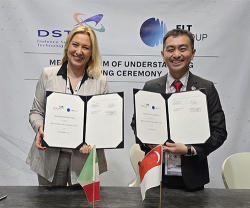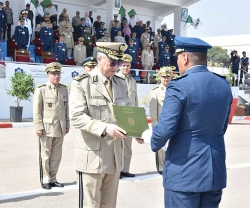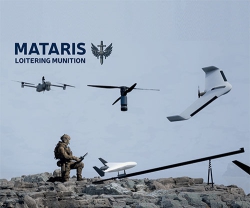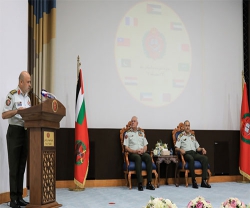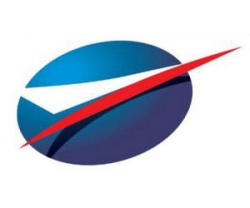Construction Starts on 2nd Queen Elizabeth Aircraft Carrier
20.02.2012 Europe
Production on HMS PRINCE OF WALES, the second Queen Elizabeth Class aircraft carrier, has started at BAE Systems in Portsmouth Naval Base - the future home of the Queen Elizabeth Class.
Work on the forward section of the hull, known as Lower Block 02, commenced as Commander-in-Chief Fleet Admiral George Zambellas cut the first steel in a ceremony at the company’s production facility. The huge section, which will weigh around 6,000 tonnes upon completion, will house the ship’s machinery spaces, stores and switchboards, as well as some of the accommodation, including 85 cabins.
Commander-in-Chief Fleet Admiral George Zambellas, said: “As Commander-in-Chief Fleet, I am honoured and delighted to be asked to cut the steel that will form part of the mighty hull of HMS PRINCE OF WALES, the second of the Royal Navy’s new 65,000 tonne aircraft carriers. Along with HMS QUEEN ELIZABETH, these two ships – each of which will be in service for over 50 years - lie at the heart of our national security posture. With the equipment that will operate from them, they will be pivotal to the UK’s ability to project power at range for decades to come.”
Mick Ord, Managing Director at BAE Systems’ Naval Ships business, said: “The steel cut for Lower Block 02 demonstrates the steady progress which continues to be made on the carrier programme. As home of the Royal Navy’s surface fleet, everyone here is hugely proud to be involved in one of the largest engineering projects in the UK today and excited that the ships will return to Portsmouth, as their home port once complete.”
As a member of the Aircraft Carrier Alliance, BAE Systems is working in partnership with Babcock, Thales UK and the Ministry of Defence to deliver the biggest and most powerful surface warships ever constructed in the UK. The company has an overarching role in managing the QE Class programme, as well as playing a central role in the design and build of the ships.
Construction of the forward island, which will control vessel navigation and house the ship’s bridge, is also underway at Portsmouth, while work continues on Lower Block 02 and the stern section (known as Lower Block 05) of HMS QUEEN ELIZABETH. Both sections are in the advanced stages of outfit, with the team focusing on preparing the blocks for their transit to Rosyth later this year, where all of the units and sections of the carriers will come together to be assembled in the dry dock.
Integration and testing of the ship’s complex mission system is currently underway at the company’s Maritime Integration and Support Centre on Portsdown Hill, whilst teams of engineers from BAE Systems and Thales are testing the advanced communications systems for the ships. Elsewhere in the Hampshire region, Southampton-based Kempsafe Limited has contracts to supply galley and laundry equipment on the vessels and Portsmouth-based Selex Communications is involved in the design of the Identification Friend or Foe system.
A significant plan of investment is underway to enhance the Naval Base, which will become the home of the two aircraft carriers when they enter service. The plan, which will cost approximately £140 million, includes dredging the existing channel to Portsmouth to make it deeper and wider, and refurbishing the base's jetties to ease access for both the QE Class and Type 45 fleet.
Each 65,000 tonne aircraft carrier will provide the armed forces with a four acre military operating base which can be deployed worldwide. The vessels will be versatile enough to be used for operations ranging from supporting war efforts to providing humanitarian aid and disaster relief. The QE Class will be the centre piece of Britain’s military capability and will routinely operate at least 12 of the carrier variant Joint Strike Fighter jets, allowing for unparalleled interoperability with allied forces.
Work on the forward section of the hull, known as Lower Block 02, commenced as Commander-in-Chief Fleet Admiral George Zambellas cut the first steel in a ceremony at the company’s production facility. The huge section, which will weigh around 6,000 tonnes upon completion, will house the ship’s machinery spaces, stores and switchboards, as well as some of the accommodation, including 85 cabins.
Commander-in-Chief Fleet Admiral George Zambellas, said: “As Commander-in-Chief Fleet, I am honoured and delighted to be asked to cut the steel that will form part of the mighty hull of HMS PRINCE OF WALES, the second of the Royal Navy’s new 65,000 tonne aircraft carriers. Along with HMS QUEEN ELIZABETH, these two ships – each of which will be in service for over 50 years - lie at the heart of our national security posture. With the equipment that will operate from them, they will be pivotal to the UK’s ability to project power at range for decades to come.”
Mick Ord, Managing Director at BAE Systems’ Naval Ships business, said: “The steel cut for Lower Block 02 demonstrates the steady progress which continues to be made on the carrier programme. As home of the Royal Navy’s surface fleet, everyone here is hugely proud to be involved in one of the largest engineering projects in the UK today and excited that the ships will return to Portsmouth, as their home port once complete.”
As a member of the Aircraft Carrier Alliance, BAE Systems is working in partnership with Babcock, Thales UK and the Ministry of Defence to deliver the biggest and most powerful surface warships ever constructed in the UK. The company has an overarching role in managing the QE Class programme, as well as playing a central role in the design and build of the ships.
Construction of the forward island, which will control vessel navigation and house the ship’s bridge, is also underway at Portsmouth, while work continues on Lower Block 02 and the stern section (known as Lower Block 05) of HMS QUEEN ELIZABETH. Both sections are in the advanced stages of outfit, with the team focusing on preparing the blocks for their transit to Rosyth later this year, where all of the units and sections of the carriers will come together to be assembled in the dry dock.
Integration and testing of the ship’s complex mission system is currently underway at the company’s Maritime Integration and Support Centre on Portsdown Hill, whilst teams of engineers from BAE Systems and Thales are testing the advanced communications systems for the ships. Elsewhere in the Hampshire region, Southampton-based Kempsafe Limited has contracts to supply galley and laundry equipment on the vessels and Portsmouth-based Selex Communications is involved in the design of the Identification Friend or Foe system.
A significant plan of investment is underway to enhance the Naval Base, which will become the home of the two aircraft carriers when they enter service. The plan, which will cost approximately £140 million, includes dredging the existing channel to Portsmouth to make it deeper and wider, and refurbishing the base's jetties to ease access for both the QE Class and Type 45 fleet.
Each 65,000 tonne aircraft carrier will provide the armed forces with a four acre military operating base which can be deployed worldwide. The vessels will be versatile enough to be used for operations ranging from supporting war efforts to providing humanitarian aid and disaster relief. The QE Class will be the centre piece of Britain’s military capability and will routinely operate at least 12 of the carrier variant Joint Strike Fighter jets, allowing for unparalleled interoperability with allied forces.
Previous PostFirst A400M for the French Air Force Takes Shape
Latest news
Latest events
Paris Air Show
16 - 22 Jun 2025Paris Le Bourget - FranceDefenPol China2025 - 7th Guangzhou International Defense & Police Exhibition & Summit
11 - 12 Jul 2025Nan Fung International Convention & Exhibition Center (NICEC) - ChinaIDEF 2025 Turkey - International Defence Industry Fair
22 - 27 Jul 2025Istanbul Expo Center - TurkeyDSEI 2025
09 - 12 Sep 2025Excel, London - United Kingdom

